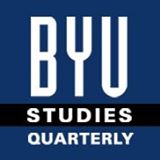BYU Studies

Keywords
Latter-day Saint, history, government, politics
Abstract
The history of the Latter-day Saint experience in Nauvoo, Illinois, still has a great deal to teach us. It is not just the simplistic story of religious persecution and expulsion that is often rehearsed. In seven dense chapters, James Simeone, professor of political science at Illinois Wesleyan University, unveils a complex political milieu to explain the tension that led to the 1846 departure of the Saints from Illinois—and ultimately the United States. Relying on political theory and philosophy and his deep knowledge of politics in frontier Illinois, Simeone unpacks the paradox of a developing democracy, which he defines as the demand that the state produce popular justice for its citizens even while the state lacked the capacity to enforce the law. That inability emboldened groups within the civil society to take up the mantle of the state and impose their own group ideals in the place of a weak government. Simeone uses this lens of state power and its intricacies to understand the break- down in group dynamics, toleration, and accommodation between the Latter-day Saints and the old settlers in Hancock County, Illinois. The state, meanwhile, did not fairly or actively manage the majority-minority relations. Instead, its inaction widened the gulf between the groups. In the end, in Simeone’s telling, the Latter-day Saint difficulties in Illinois provide a useful example of failed governance.
Recommended Citation
Simeone, James and Rogers,, Brent M. reviewer
(2022)
"The Saints and the State: The Mormon Troubles in Illinois,"
BYU Studies: Vol. 61:
Iss.
1, Article 26.
Available at:
https://scholarsarchive.byu.edu/byusq/vol61/iss1/26
